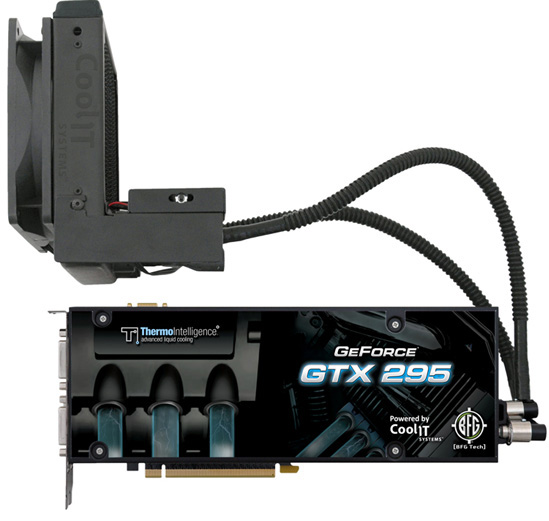BFG's GTX 295 H2OC: Water-Cooled Graphics
The Card and Its Cooler

The attached water tubes are reasonably flexible and the connectors themselves have a limited degree of rotation. Unfortunately, the two are placed too close together to allow for more than small adjustments.
Stock imagery is useful, in this case, for giving a clear sense of scale and detail. The small button on top of the cooler is used to set the speed of the 120mm fan attached to the radiator. A series of beeps indicates the setting if the fan's noise isn't indication enough—one beep for low, two beeps for medium, and three for maximum speed. Exact decibel measurements aren't available, but the fan is effectively inaudible over general system noise at low speed, and easily the equal of most GPU coolers at high. Since low noise levels are part of the draw of water cooling, keeping things quiet is a major plus.
A better view of the radiator, and the six-pin/eight-pin power plugs. Click for high res.
The gap between the two tubes, as previously noted, is smaller than it appears to be here. The HDMI port in front is a bit of a rarity; most manufacturers have opted to use a DVI port for HDMI signal pass-through, except on GTX 295 cards. You can't see it from here, but the fan is attached to the radiator by pop rivets. Good luck disconnecting the two, should the former ever fail.








